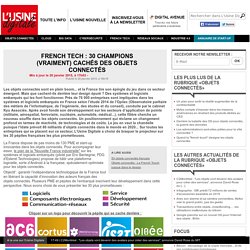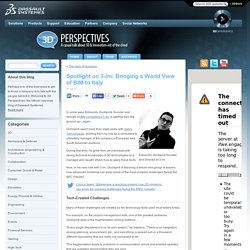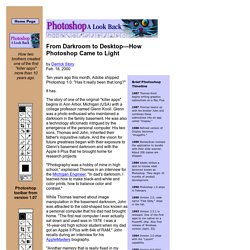

French Tech : 30 champions (vraiment) cachés des objets connectés - dossier. Les objets connectés sont en plein boom... et la France tire son épingle du jeu dans ce secteur émergent.

Mais que cachent-ils derrière leur design épuré ? Des systèmes et logiciels embarqués qui les font fonctionner. Près de 76 000 entreprises sont impliquées dans les systèmes et logiciels embarqués en France selon l’étude 2014 de l’Opiiec (Observatoire paritaire des métiers de l’informatique, de l’ingénierie, des études et du conseil), conduite par le cabinet Kyu Associés. Après avoir fondé son développement sur les secteurs d’application de pointe (militaire, aérospatial, ferroviaire, nucléaire, automobile, médical...), cette filière cherche un nouveau souffle dans les objets connectés. Un positionnement qui réclame un changement profond en termes de réactivité, de technologies et de coûts. La France dispose de pas moins de 130 PME et start-up innovantes dans les objets connectés.
Cliquer sur un logo pour découvrir la pépite qui se cache derrière : Quand l'innovation « disruptive » impose sa loi à l'économie. Transistors, disques durs, écrans tactiles capacitifs ont en commun d'être des « technologies disruptives », un concept formalisé en 1995 par l'Américain Clayton M.

Christensen. Mais, qui se souvient de leurs inventeurs ? En revanche, chacun de nous connaît Steve Jobs. Qu'a-t-il inventé ? Pas l'écran tactile, ni les batteries pour smartphone, ni le GPS. Grâce à Steve Jobs, Jan Koum a réussi, voici quelques jours, le « coup » de l'année en vendant à Mark Zuckerberg (Facebook) pour 19 milliards de dollars son application de messagerie WhatsApp - 450 millions d'utilisateurs - qui bouscule le marché du mobile ; Mark Zuckerberg, un autre disrupteur qui a fait basculer Internet à l'heure du partage 2.0... Le phénomène ne date pas d'hier. Architecture. ORGATEC NEWS Blog. Tuff-roof.pdf. Spotlight on 3-im: Bringing a World View of BIM to Italy.
Edmondo Occhipinti founder and Director of 3-im In some ways Edmondo Occhipinti, founder and director of BIM consultancy 3-im, is starting from the ground up—again.

Occhipinti spent more than eight years with Gehry Technologies, working from his role as a consultant to ultimately manager of the company’s European and South American divisions. During that time, he grew from an individual with strong technical knowledge of 3D technologies to a manager who taught others how to apply these tools. Now, in his new role with 3-im, Occhipinti is teaching a whole new group of players how advanced modeling can solve some of the most complex challenges facing the AEC industry. Click to tweet: “@treiemme is teaching players how 3D modeling can solve the complex challenges facing the #AEC industry” Tech-Created Challenges Many of these challenges are created by the technology tools used most widely today. “Every single department is on its own system,” he explains. Then, there are issues of scalability. Story Photograpy: History of Photoshop. From Darkroom to Desktop—How Photoshop Came to Light by Derrick Story Feb. 18, 2000 Ten years ago this month, Adobe shipped Photoshop 1.0.

"Has it really been that long? " It has. The story of one of the original "killer apps" begins in Ann Arbor, Michigan (USA) with a college professor named Glenn Knoll. "Photography was a hobby of mine in high school," explained Thomas in an interview for the Michigan Engineer. While Thomas learned about image manipulation in the basement darkroom, John was attracted to the odd-shaped box known as a personal computer that his dad had brought home. "Another memory that is really fixed in my mind" John adds, "was in 1984 when I picked up a copy of Time magazine that had a little article about the Macintosh, and I thought, wow, look at this thing!
" Even though Thomas loved hands-on darkroom work, he too had a keen interest in computers and programming. Thomas's work led to more subroutines and chunks of image programming. Montpellier : la start-up Virdys reconstitue en 3D l'actualité mondiale. German Engineer 3D Prints World’s First Solar Powered Stirling Engine. Each and every day, I am blown away in yet another way by all of the new innovations that have quickly been coming into existence within the 3D printing space.

It seems as though just a couple years ago no one even knew what 3D printing was, and today we have everything from 3D printed houses to 3D printed cars, prosthetic hands, electronics, and more. It makes me wonder just how much further along we will be in the next five or ten years. Perhaps we won’t only have 3D printed cars, but their motors and engines will be 3D printed as well. Today we get a step closer, as we introduce you to a German aeronautical engineer named Andreas Haeuser and his incredible 3D printed creation.
Haeuser himself is known for designing and creating several unique 3D printable devices, such as the “RepRap Windturbine.” Haeuser has designed and created the world’s first known 3D printed solar powered Stirling engine, an engine that runs completely off of the sun’s heat.